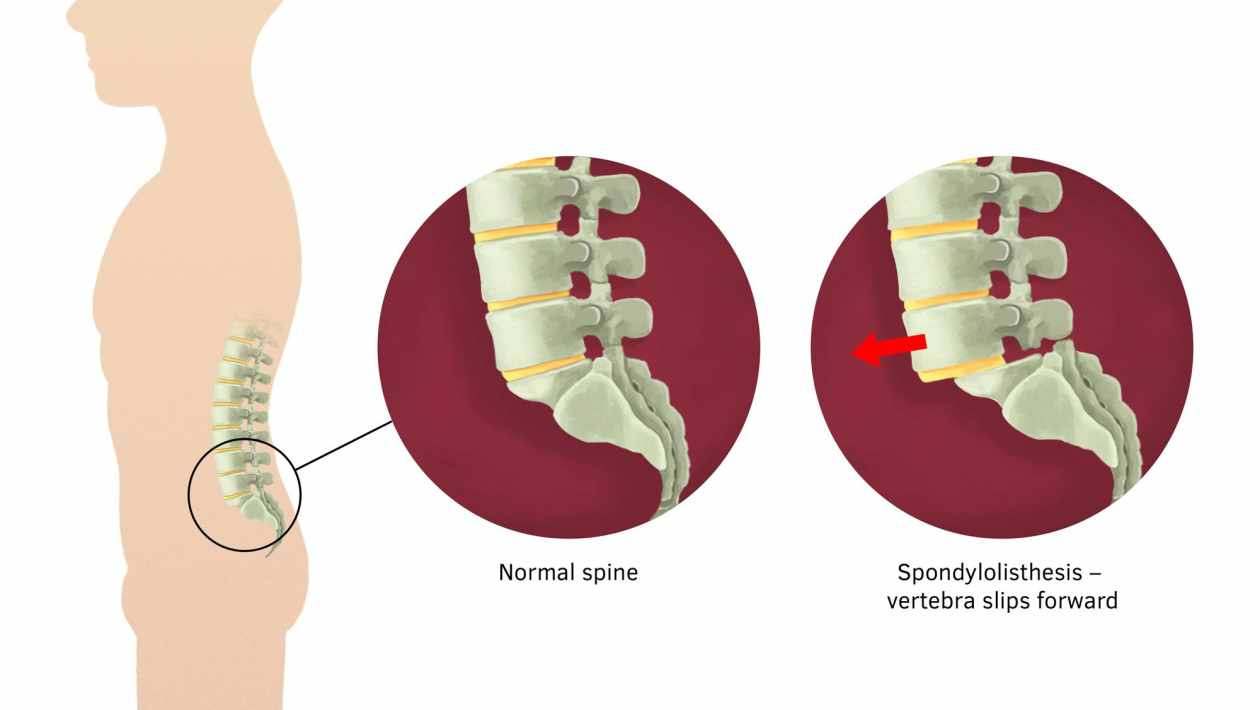The spine is the central load-bearing structural element of all vertebrates and, of course, of humans. Many people associate diseases of the spine first and foremost with a slipped disc. However, there are other diseases, some of which have serious consequences. An important example is spondylolisthesis or spondylolisthesis. This disease is better known as spondylolisthesis.
Table of Contents
What is spondylolisthesis?
Spondylolisthesis or spondylolisthesis is an instability of the spine. In this case, individual vertebrae are overmobile and shift, mostly in the area of the lumbar spine, either forward or backward against each other. The result is pain and restricted movement, even paralysis or numbness. If the spinal cord is constricted in the process, spinal canal stenosis develops, which in addition to pain can also result in neurological deficits.
Symptoms
The most common and typical symptom of spondylolisthesis is deep-seated and chronic or recurrent back pain that is load- and movement-dependent. However, tension or pain radiating to the hip area or legs is also possible. The reason for this is compression of the nerves supplying the hip.
In a few cases, however, spondylolisthesis is also asymptomatic. However, a symptom-free course affects only 2 to 4 percent of all affected persons.
Diagnosis
As a rule, a patient consults a doctor if he or she has symptoms and is then referred to a specialist. If there are no symptoms, the disease is often diagnosed only by chance.
To diagnose spondylolisthesis, the spondylolisthesis specialist asks about possible previous illnesses during the medical history and pays attention to the patient’s posture or crooked pelvis. Family history, sporting activities or damage suffered, for example, as a result of accidents, are also important. The doctor then palpates the back and looks for so-called steps in the spine, which can be caused by the displaced vertebrae. By means of sensitivity and motor function tests, the doctor can determine whether damage has already occurred to the nerves.
Imaging techniques are an important part of the examination. X-rays can be used to detect displaced vertebrae, and MRI or CT scans can be used to detect any compression.
Causes and development
Spondylolisthesis can be not only congenital, but also degenerative. In the latter, spondylolisthesis develops through wear and tear in a slow process over years. Other factors in the development of spondylolisthesis are pre-existing conditions characterized by malformation of the spine. This is the case, for example, with scoliosis. Accidents can also lead to spondylolisthesis.
Treatment options
The individual treatment options depend on the different stages of spondylolisthesis. In medicine, there are 5 different degrees, depending on the severity of the displacement.
The treatment of spondylolisthesis focuses on eliminating or at least reducing the patient’s pain and stopping the progression of the disease as best as possible. As a rule, conservative therapy is carried out in the form of medication. Physiotherapy is also used to strengthen the back muscles and promote trunk stability.
Only in more severe cases does surgical therapy come into play. This is always the case when conservative therapy has failed or neurological deficits occur. In the so-called fusion operation, a minimally invasive attempt is made to stabilize the spine again by means of screws and connecting rods.
Healing time after surgery
After surgical treatment of spondylolisthesis, the patient is unable to work for at least 4 weeks, depending on the activity, even for several months. During this time, the patient should take it easy and, for example, refrain from sports. It is important to give the body a rest period after the operation to allow the best possible healing of the stiffening of the spine.
I believe in creativity and try to express the same with my words. I enjoy writing and keeping myself in touch with the books.







